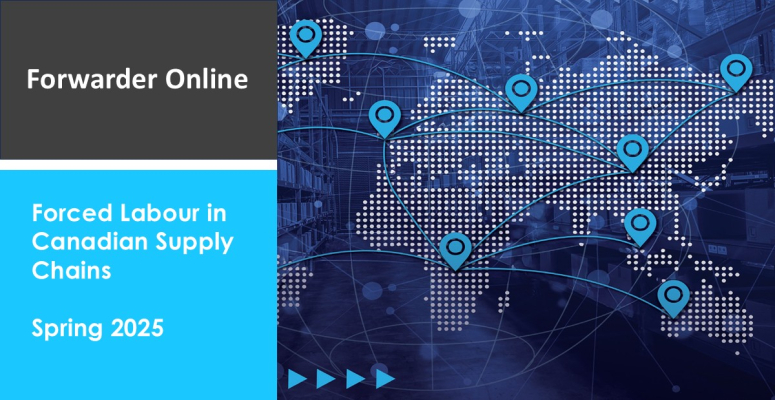
Forced Labour in Canadian Supply Chains
BILL S-211, An Act to enact the Fighting Against Forced Labour and Child Labour in Supply Chains Act and to amend the Customs Tariff, was passed by the Senate in Canada on April 28, 2022 and received Royal Assent in 2023.
The Fighting Against Forced Labour and Child Labour in Supply Chains Act imposed an obligation on certain government institutions and private-sector entities to report on the measures taken to prevent and reduce the risk that forced labour or child labour is used by them or in their supply chains. The Act provides for an inspection regime applicable to entities and gives the Minister the power to require an entity to provide certain information. It also amended the Customs Tariff to allow for a prohibition on the importation of goods manufactured or produced, in whole or in part, by forced labour or child labour as those terms are defined in the Fighting Against Forced Labour and Child Labour in Supply Chains Act.
Forced labour can be found in every country and every sector. The International Labour Organization estimates that there are approximately 28 million victims of forced labour worldwide, including 17.6 million in the private economy. There is a risk that goods entering the Canadian market through global supply chains were produced using forced labour or child labour.
The Fighting Against Forced Labour and Child Labour in Supply Chains Act (the Act) aims to increase industry awareness and transparency about forced labour and child labour, and to encourage responsible business practices.
Certain entities and government institutions must submit a report to the Minister of Public Safety by May 31 of each year. Reports must describe the steps the entity or government institution has taken during its previous financial year to prevent and reduce the risk that forced labour or child labour is used in its activities or supply chains.
All reports are made available to the public in two ways:
- In a prominent location on the entity or government institution’s website
- In an online catalogue on Public Safety Canada’s website
Who needs to submit a report
An entity refers to any corporation, trust, partnership or other unincorporated organization that:
- is listed on a stock exchange in Canada; or
- has a place of business in Canada, does business in Canada or has assets in Canada and that, based on its consolidated financial statements, meets at least two of the following three criteria for at least one of its two most recent financial years:
- has at least $20 million or more in assets,
- has generated at least $40 million or more in revenue, and,
- employs an average of at least 250 employees.
Those who fall within the above definition of entity are required to submit a report only if they:
- produce goods in Canada or elsewhere;
- import goods produced outside Canada; or
- control another entity that produces or imports goods.
In theory, no product produced by child labour is allowed to enter Canada. But Canada does not enforce it at the border-the reporting requirements aim to address any issues.
SME clients should not however ignore the risks even if they are not directly implicated. In a CIFFA webinar on Forced Labour March 4, CIFFA instructor and presenter Christian Sivière noted that freight forwarders, while they have no reporting obligations, can help customers understand liabilities -making sure suppliers of finished products are not importing a product where the raw material comes from a company that is sanctioned/forced labour.
Companies must be vigilant-integrating geopolitical risks into their strategies, putting more emphasis on compliance, and being conscious of what is happening in the U.S.-re export controls, sanctions and restrictions, corruption, money laundering, etc. The extra-territorial application of U.S. laws in Canada and around the world makes this paramount.
In the case of exporters, Sivière noted that they can protect themselves through traceability of their supply chain with upstream suppliers. For example, by knowing their export customers, avoiding ExWorks shipments in favour of FCA shipments, validating end use of the product, validating export permits and using double scrutiny with countries known to participate in sanctions evasion, as well as double scrutiny with dual-use goods (for example products used both in industry and in military applications).
Canadian exporters must ensure that they don’t export goods made in the U.S. or with U.S. technology to any country where the U.S. has an embargo and/or sanctions.
In Europe, in 2023 there was public consultation on proposed regulation to prohibit any products made, extracted or harvested with forced labour, made in the E.U. or elsewhere. The E.U. is targeting entry into force of these regulations in 2025, banning such products for sale in the E.U. market. But again, noted Sivière, screening will not be done at the borders.
Importers, meanwhile, can protect themselves by gathering supply chain information on the goods they intend to import, for example bills of materials, lists of suppliers for each step in the production, commercial invoices and certificates of origin.
Freight forwarders provide a value-added service in the mitigation of forced labour. Helping their customers deal with these issues
Freight forwarders who have done their due diligence have no direct liability.
They have to respectfully turn down requests to pick up from any prohibited entity, and make sure customers are not front companies, but are legitimate entities, while also making sure branded goods are not fake.
View the complete Forwarder Magazine.



